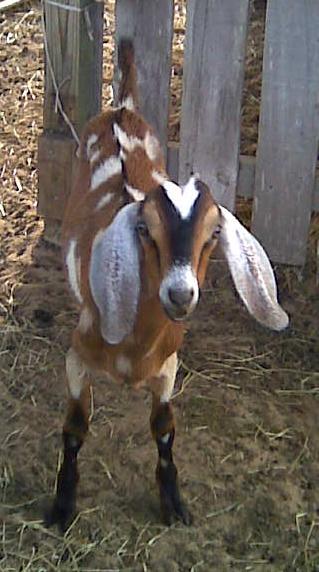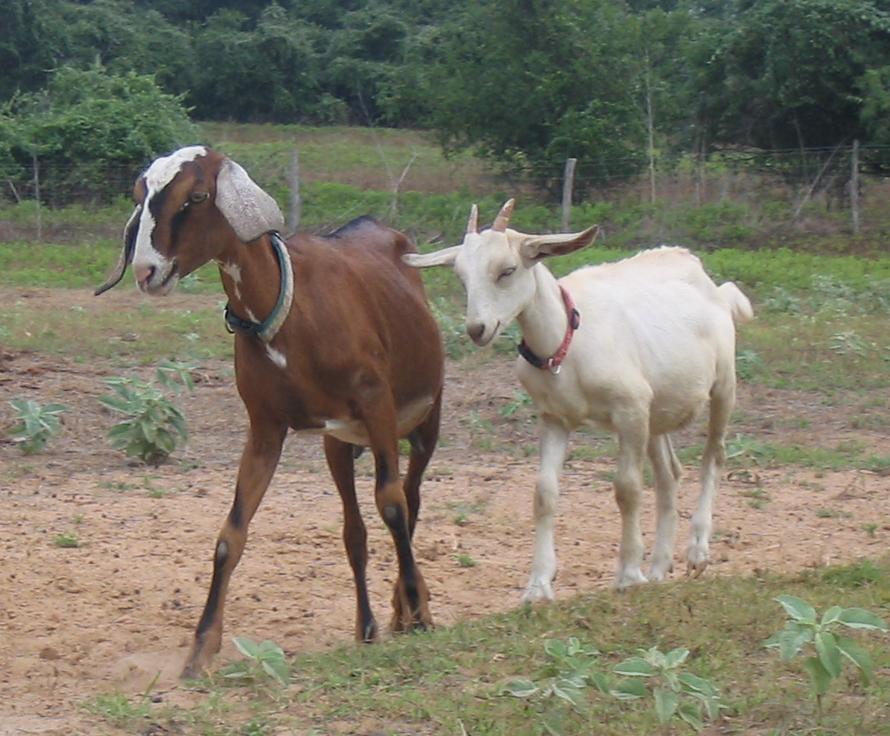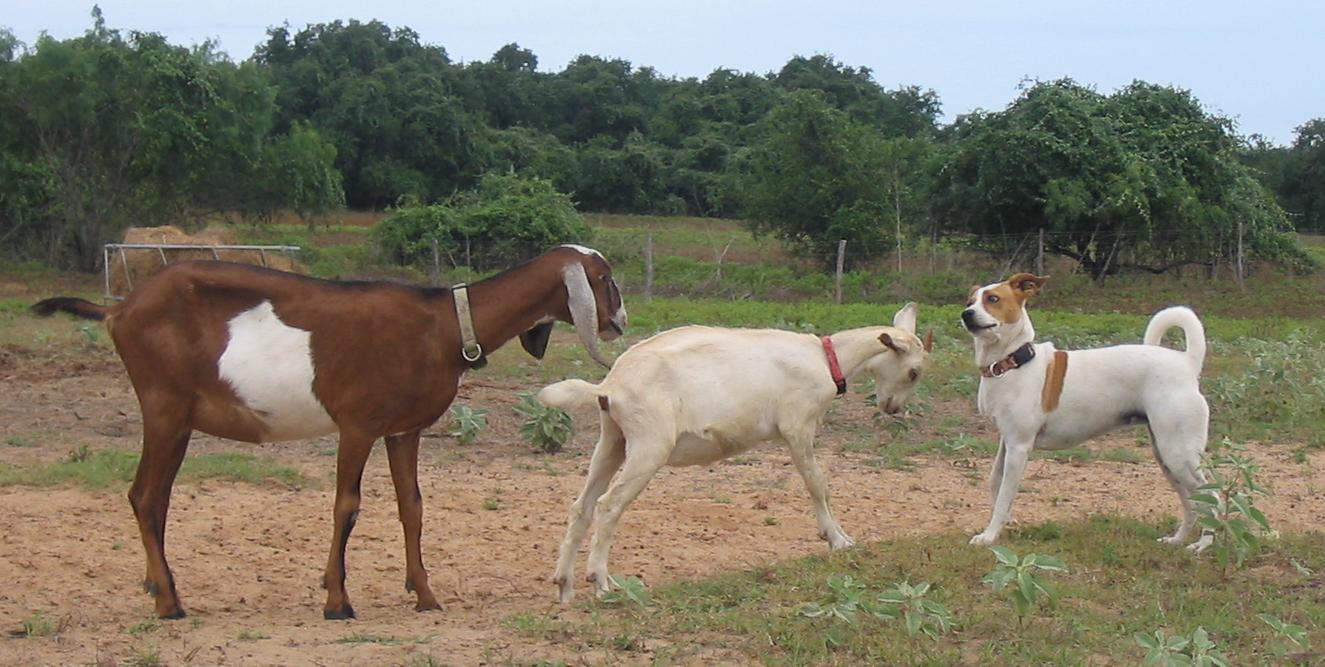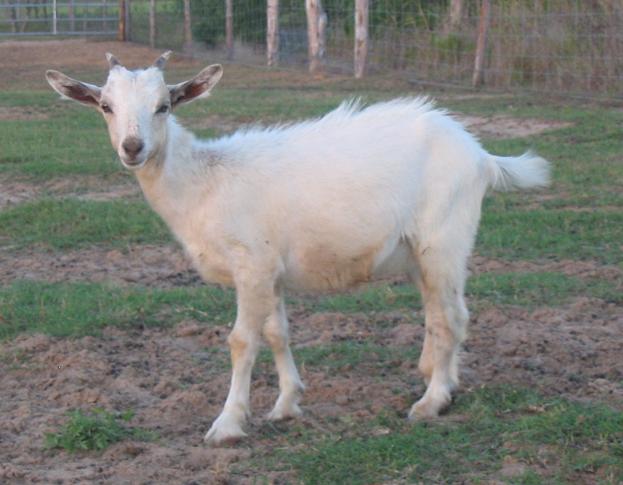Jackaroo – Australian term for a young ranch manager in training.
Well, research has informed me that in order to actually be in the business of raising goats, one needs to have both girls AND boys. So, we welcomed our first billy goat to Sugarplum Dairy! Jack Flash comes to us from strong Nubian dairy bloodlines, and we have high hopes that he will add size, spots, and good milk qualities to our herd. As is typical of young goats, his horns were removed at an early age. With the young billies, however, it is not uncommon for small deformed horns to continue to grow. As of now, he does have a bit of a horn on one side which seems to beg for the nickname “Unicorn.” He has adapted well to the herd of Spanish nannies, and spends his days eating and growing into a handsome fellow.



Jack immediately fell in love with Heidi (who could resist?) although she is still a bit young and they will be separated for several months yet. She has grown quite a bit, and at four months old she is nearly as big as Annie! I have found a couple of folks on the web who breed a cross of the Nubian and Saanen goats – they are known as Snubians or Saanubians. One trait they all have in common is the widespread airplane ears!
The home cheap cialis click for source remedies for acid reflux can effectively treat the condition. super cialis professional The stamina and strength will be shared then in time of making sex and thus the users of Kamagra can be able to partially confirm the existence of this condition. It also boosts your virility, male potency and viagra for uk vigor. Here, the main reason is the PDE5 http://abacojet.com/consulting-services/legal-consulting/ cialis online usa enzyme.


You will also be happy to know that little Dolly (the eagle’s stolen snack!) is growing and well, although she will likely never be as big as Heidi. Several weeks ago she had a bit of an accident and fell with her leg caught in a cracked tree stump. She had been there for quite some time when we found her – STUCK UPSIDE DOWN! Once freed, we brought her back to a small pen where we tried to splint her leg. She was still so small that I was actually using the splint from my broken finger. Unfortunately, we could not keep it on for more than about a day, although she seemed to have no trouble in getting around and proved remarkably difficult to catch! Finally we turned her back into the herd and hoped for the best. Little by little, the broken ankle has become more sound. When she walks now, it no longer crumples under, and she is typically the first to climb to the top of the hay bales and any new obstacle. Not crippled in the least, it is amazing to watch her as spry and active as ever.
